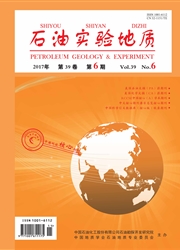

 中文摘要:
中文摘要:
南海具有优良的成礁条件,但受限于资料品质,礁体结构刻画并不精细。借助新获取的高品质3D地震数据,利用地质—地球物理精细刻画技术,对南海西部深水区南部隆起断控台缘型生物礁进行了精细解剖。研究认为,礁体多具独立生长的丘状或透镜状外形,其内部礁脊和礁沟清晰可辨,垂向结构上以加积型和进积型为主。空间上,依据礁体的生长过程可归结为追补型、并进型和快步型3种类型,追补型生物礁生长速率较慢,且向陆退积生长,并进型和快步型生物礁生长速率较快,以垂直加积生长为主。礁体的空间展布形态与生长速度受海平面升降、可容纳空间变化和古地貌形态联合控制。
 英文摘要:
英文摘要:
In the South China Sea,there were favorable conditions for reef development. However,the reef structure was not precisely described due to the lack of high-quality seismic data. Geologic and geophysical analyses were used to study the reefs in the fault-controlled margin of the southern uplift of the western deep-water area in the South China Sea. The reefs showed hummocky or lenticular shape,and the internal reef crest and reef ditch were observed clearly. Vertically,the reef structure displayed aggradational and progradational characteristics. There were three types of reef identified according to their growth speed,including slow-growth,constantgrowth and fast-growth ones. For the first type,reefs grew slowly and retrograded to continents. For the other two types,reefs grew fast and aggraded vertically. The spatial distribution and growth speed of reefs were controlled by sea level changes,space changes and ancient morphology.
 同期刊论文项目
同期刊论文项目
 同项目期刊论文
同项目期刊论文
 Shale gas potential of the Lower Permian Gufeng Formation in the western area of the Lower Yangtze P
Shale gas potential of the Lower Permian Gufeng Formation in the western area of the Lower Yangtze P Characteristic and distribution of reef complexes on the carbonate platform margin in western deep w
Characteristic and distribution of reef complexes on the carbonate platform margin in western deep w 期刊信息
期刊信息
